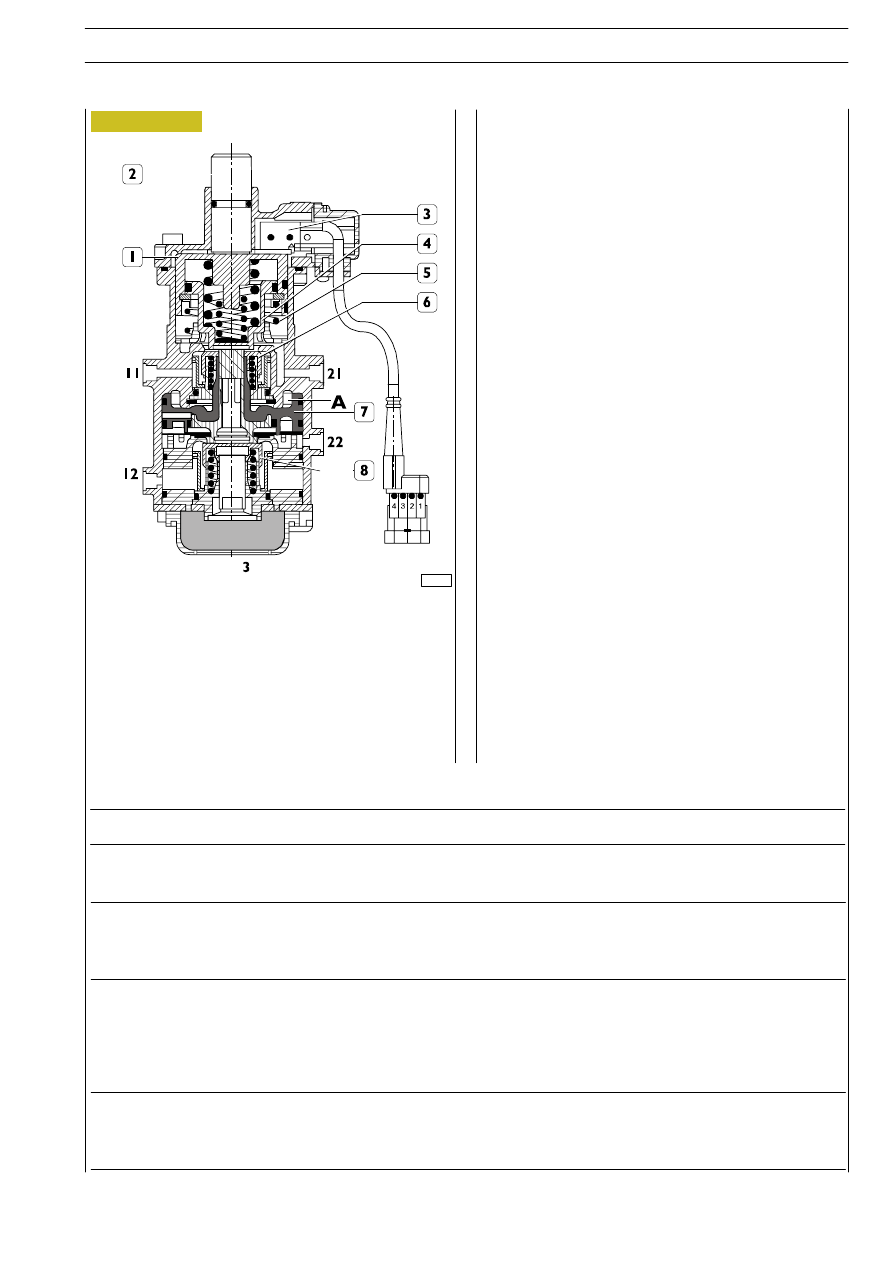Iveco EuroCargo (12 to 26 t). Manual - part 181

62580
Under rest conditions, the exhaust is open, since spring (5)
pushes the pistons assembly (upper valve seat) (1 and 4)
upwards.
Valves (6 and 8) are in contact against their respective sealing
seats and intercept the passage of air between air inlet fittings
11 and 12 and outlets 21 and 22.
The lower valve seat piston (7) is at rest (running) with
discharge 3 open.
By operating on the brake pedal, control push rod (2) and
pistons assembly (1 and 4) are pushed downwards.
Piston push rod seat (4) initially closes the exhaust and
afterwards opens upper valve (6). Compressed air, from fitting
11, passes and supplies fitting 21, rear axle and chamber A.
When in section 21 and chamber A a pressure value is
reached of about 0.15
÷ 0.3 bar, valve (8) is also opened due
to the piston thrust effect.
Piston (7) abuts on valve (8), closes the exhaust and opens
the passage between fitting 12 and fitting 22 that supplies the
front vehicle section.
In case of failure in the control section 11-21, the other one
12-22 intervenes only due to the mechanical thrust effect of
upper pistons (1 and 4).
By completely operating on control push rod (2) (maximum
stroke), the output pressure of the two sections 21 and 22
reaches 7.6
± 0.3 bar that is the pressure self-limiting value.
In case of failure 0 (zero) bar in supply fitting 11, by completely
operating on control push rod (8) air must go out of fitting 22
till a pressure equal to or greater than 6.5 bar.
Such behaviour is guaranteed by the control push rod (2)
mechanical thrust that abuts on piston (1); afterwards, piston
(4) comes in contact with (7) and opens valve (8).
At a push rod (2) stroke of 0.5
÷ 1.5 mm, the stop lights
contacts are closed and the engine brake contacts are opened
in microswitches (3).
Unbraking
By releasing the brake pedal, the control push rod (2) and the
piston assembly (1 and 4) return upwards together with
piston (7).
By going on releasing the brake pedal, the valves remain into
their respective entry seats and afterwards the exhaust seats
of pistons (4 and 7) are detached from valves and air flows to
the atmosphere through exhaust 3.
At the end of the release, also microswitches (3) return to
their running position.
Air leakage from
discharge hole
Distributor with irregular
self-limitation
Vibrations when braking
Irregular stop lamp
control switch operation
INCONVENIENCE
POSSIBLE REASON
REMEDY
Outlet ducts leakage for sealing gaskets
wear.
Self-limitation higher or lower than the re-
quired one.
Springs wear.
Air leakage caused by piston gaskets seal in
the two sections.
The electric circuit does not close.
The electric circuit does not open.
Revise the device replacing the faulty parts.
By operating on the suitable screw, calibrate the device.
Revise the device replacing the faulty parts.
Revise the device replacing the faulty parts.
Replace the switch.
Replace the switch.
Diagnostics
Figure 41
E
URO
C
ARGO
T
ECTOR
12-26 t
PNEUMATIC SYSTEM - BRAKES
69
Base - February 2003